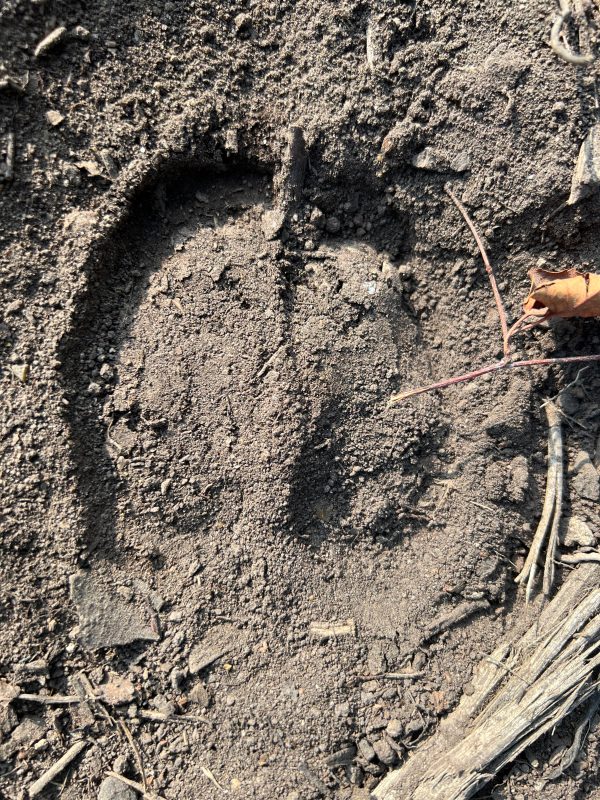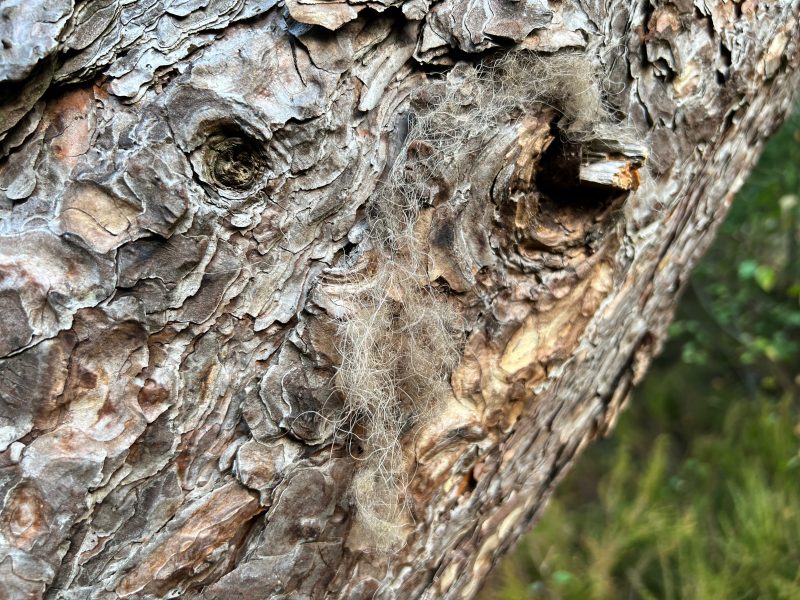Words Amicia de Moubray Photographs Robert Canis, Donovan Wright
The recent arrival of three European Bison to the Blean Woods just a few miles from Faversham, has attracted ‘phenomenal worldwide interest from America to Australia,’ says Vicki Breakell, Conservation Officer and the project lead for Wildwood Trust. ‘It is a huge challenge as nothing similar has ever been done before.’ What is all the excitement about, you may be wondering?

A splendid European Bison
The answer is that European Bison are truly brilliant eco-system engineers. ‘Their foraging behaviour is unique in that they love munching bark and the woodier parts of trees.’ Conventional domestic breeds merely feast on the tips of branches and leaves, in other words going for the ‘soft option.’ Over time, trees ravaged by bison eventually die and fall to the ground, creating a welcome gap in the tree canopy. This allows a rich micro-habitat of insects, bats and delicate plant species to develop and thrive. It also creates a canopy of different heights. ‘Closed or single-height canopies don’t enable the same complex environment as they don’t receive enough sunlight.’

Vicki Breakell of the Wildwood Trust and Stan Smith of Kent Wildlife Trust release a European Bison at Wildwood. A landmark moment
Fascinatingly, Vicki says that seeds that have been lying dormant for hundreds of years on the ground can spring into life if kissed by the sun through the new holey canopy – like the fairy tale of The Sleeping Beauty. Bison also like nothing more than rolling around in dust baths creating even more open ground. Below ground, the story is equally enthralling: the more diverse the plants above ground, the more complex are the root systems. It is an excellent method of sequestering carbon if the soil is bursting with rich organic matter.
Is this rewilding, I ask (to use a voguish buzz word)? ‘I like to call it ‘wilding.’ It is restoring the natural processes, providing the ecosystem with the necessary tools to look after itself,’ says Vicki firmly, adding: ‘You end up with natural woodland glades which allows for regeneration.’
Some people might be alarmed at the prospect of having European bison as their neighbours. Great care was taken to engage the local community before embarking on the experiment. A group including Vicki went to inspect a herd of semi-wild bison and see how they were managed in the Netherlands.
Funded by the People’s Postcode Lottery Dream Fund, the Wilder Blean project is a joint venture between Wildwood and the Kent Wildlife Trust. ‘We want to keep people involved at all levels with plenty of educational events.

A European Bison track
The three bison have come from wildlife parks: an older female from Highland Wildlife Park in the Cairngorms, the matriarch of the herd, and the two young females from Fota Wildlife Park, Co Cork in Ireland.
Vicki, a resident of Faversham, first became interested in insects and their ilk as a small child. ‘I remember once proudly giving my mother a woodlouse. At school, I wasn’t aware of wildlife conservation as a subject and thought the only career options available were to be a vet or a veterinary nurse.’ Happily, she discovered that the University of Kent offered a Natural Science Degree in Biodiversity and Conservation Management.
In 2008 she began volunteering at Wildwood, going on to be employed as the Water Vole Keeper and then as Conservation Officer.
In 2019 Wildwood had a scoping meeting with the new CEO of the Kent Wildlife Trust, Evan Bowen-Jones, to dream up joint professional partnerships. Evan was quoted recently in The Times ‘We need to revolutionise the way we restore natural landscapes, relying less on human intervention and more on natural engineers like bison, boar and beaver.’

A European Bison having a good old scratch

Evidence of a conifer having been rubbed by a European Bison
At the moment the bison can’t be seen by visitors (they are currently rambling around 60 hectares of Kent Wildlife Trust’s West Blean and Thornden Woods reserve, but in time this will be extended to 200 hectares). A viewing platform that overlooks the Blean has been erected at Wildwood. Currently, the project has a licence for up to 10 bison and there are plans to introduce a bull from Germany to support the international breeding programme to keep genetic diversity in the herd. ‘We will be giving people the chance to experience bison in the wild. It is a really powerful, emotional, visceral experience and something we have lost in this country,’ says Paul Whitfield, Director General of Wildwood Trust on the Trust’s website.
In 1927 there were only 54 European Bison left, all in European zoos. Nearly a century on, there are now more than 9,000 as a result of a successful breeding programme. Before 2000, they were classed by the International Union for Conservation of Nature as Vulnerable to Extinction but by 2020 their status had changed to Near Threatened.
The longterm plan is that the Wider Blean Project will be replicated elsewhere. Natural England is very excited. And so it should be. This little corner of East Kent is at the forefront of fighting global warming.
Text: Amicia de Moubray. Photos: Robert Canis Donovan Wright
Six years ago today Faversham Life published its first article. 252 articles later, we are never stumped for something to write about in our market town of fine buildings in an extraordinary landscape, seething with talent, creativity, history and eccentricity.